Terminator – What Every Sequel Did Wrong

James Cameron created one of sci-fi’s most iconic franchises back in the 1980s through highly unorthodox means. While filming Piranha 2: The Spawning, the future Oscar-winning director fell ill with a high fever, which triggered a nightmarish dream of a robotic skeleton emerging from a sweltering fire.
The image would later be recreated in the first installment of the Terminator franchise, when Arnold Schwarzenegger’s titular cyborg is burnt down to its metal endoskeleton, and proceeds to chase Sarah Connor and Kyle Reese into a manufacturing plant during the final act.
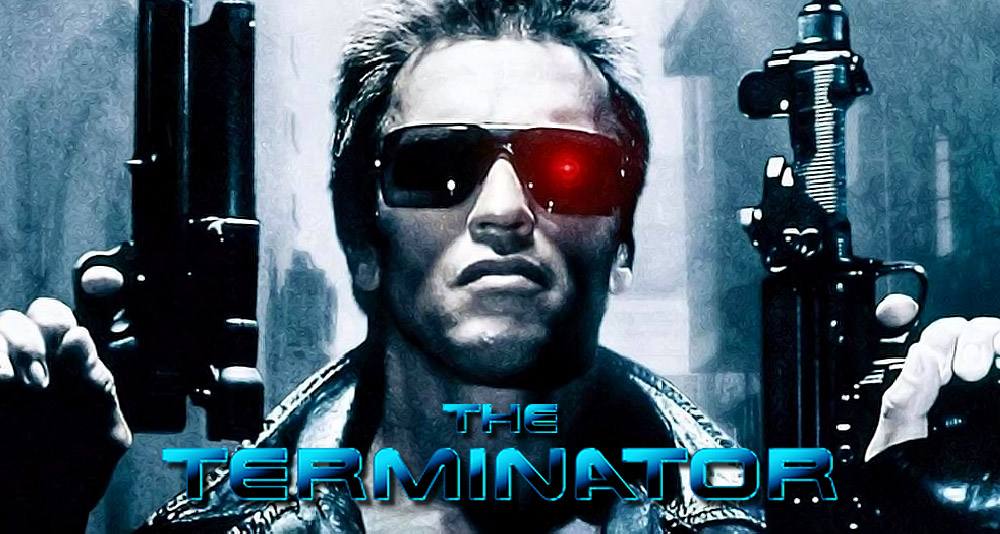
Source: The Terminator, Orion Pictures
The Terminator was an instant success, and put Cameron on Hollywood’s map in a big way. He’d follow up his directorial debut with the equally successful Aliens, and films like True Lies, Titanic and Avatar, the latter two earning spots on the list of highest-grossing films of all time.
As fantastic as the first Terminator film was, its inevitable succession of sequels stumbled in an effort to recapture what made the original such an integral part of Hollywood cinema and sci-fi pop culture. This eventually led to the franchise’s ultimate downfall, which is a far cry from the artistic pedigree it established way back in 1984.
1) TERMINATOR 2: JUDGMENT DAY (1991)

Source: Terminator 2: Judgment Day, TriStar Pictures
It’s hard to throw any shade at Terminator 2, mainly because it took everything that made the original so great, and cranked the volume knob well past eleven. T2 brought state-of-the-art filmmaking and visual effects technologies to the forefront of production, which ended up helping to revolutionize Hollywood as a whole.
In terms of story, the formula was dynamite. T2 flipped the premise of Arnold Schwarzenegger’s killer cyborg on its head, reprogramming his carbon copy follow-up to be a protector in service of humanity’s future. At the same time, it introduced a sleeker, more refined infiltrator dubbed the T-1000, a mimetic polyalloy prototype that could assume the form of anyone it touched.

Source: Terminator 2: Judgment Day, TriStar Pictures
With a production budget far exceeding the original, James Cameron brought his keen directorial eye to the picture, crafting some of the most amazing action sequences ever committed to film. More than 30 years later, T2 is still considered the action movie gold standard, blending practical effects and stunt work with impressive CGI that is only now beginning to show its age.
WHAT IT DID WRONG
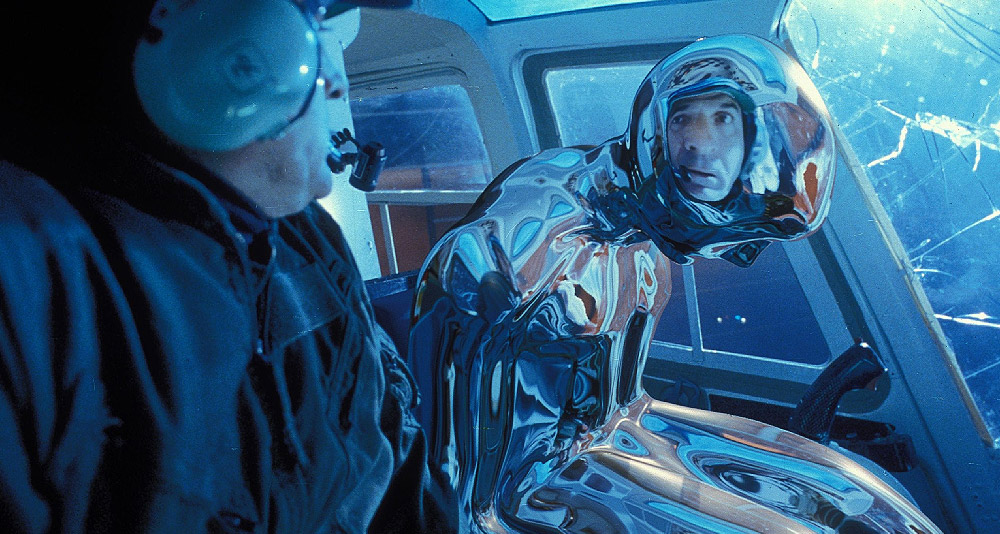
Source: Terminator 2: Judgment Day, TriStar Pictures
Terminator 2 is hard to fault, but it did place one foot wrong. Cameron decided to leave the ending more ambiguous than it needed to be, perhaps at the behest of the studio execs who were keen on making a third film some time in the future. Little did many fans know that Cameron had initially shot an alternate ending for the film, which wrapped up the story.

Source: Terminator 2: Judgment Day, TriStar Pictures
Instead of Sarah Connor talking about facing the future with a sense of hope that things may turn out alright, she was instead shown playing in a park with a grown-up John Connor and her grandchild. It was the polar opposite shot of the park shown in the terrifying “nuclear nightmare” dream sequence that Sarah suffers midway through the film.
At the time, Hollywood had not yet descended into creative bankruptcy and laziness, so the idea of a third Terminator film might have seemed like a good idea. Cameron followed up T2 with a pseudo-sequel of sorts in the form of T2 3D: Battle Across Time, created exclusively for Universal Studios theme parks.
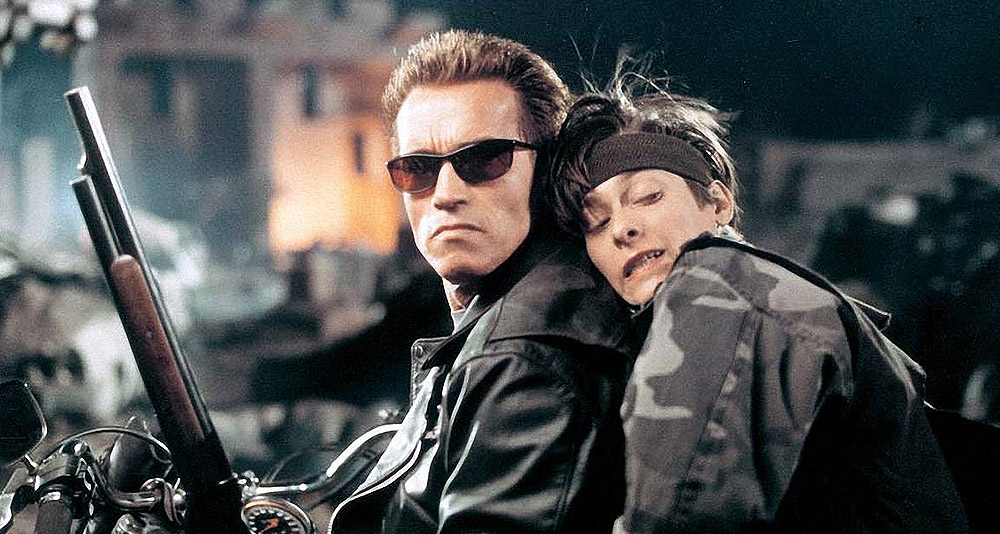
Source: T2 3D – Battle Across Time, Universal Studios
Though not canon, it depicted the direction the series might have gone if a third film were created. It even brought back T2’s stars, including Edward Furlong, Robert Patrick, and of course, Schwarzenegger himself.
Unfortunately, lesser talented directors would get their mitts on the franchise over the course of the next 30 years, cranking out one successively bad sequel after another. Had Cameron been able to foresee just how far his beloved franchise had fallen, he may have pressured the studio to opt for his alternate ending, which effectively ended the story right then and there.
2) TERMINATOR 3: RISE OF THE MACHINES (2003)
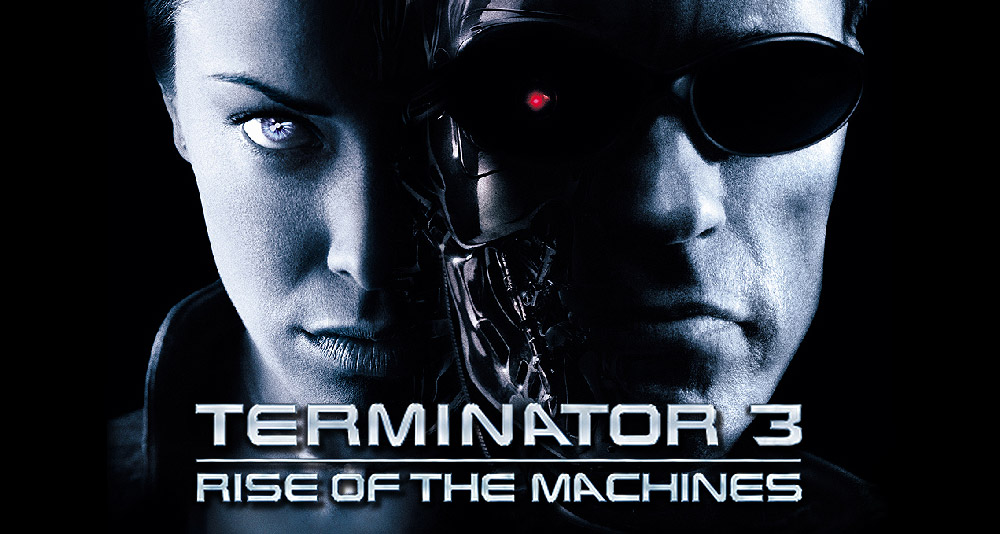
Source: Terminator 3 – Rise of the Machines, Columbia Pictures
Over a decade after the release of Terminator 2, a third film was finally greenlit and shot, and Schwarzenegger was scheduled to make a triumphant return as the world’s most beloved cyborg. Terminator 3: Rise of the Machines picked up where T2 left off, with a paranoid John Connor essentially living off the grid in an effort to keep himself safe.
Years had passed since he narrowly escaped termination at the hands of the T-1000, but the fear never abated. Those fears would soon be realized when a new infiltrator dubbed the T-X appeared in the modern day to track and kill not just him, but his future lieutenants who would help lead the revolt against SkyNET.
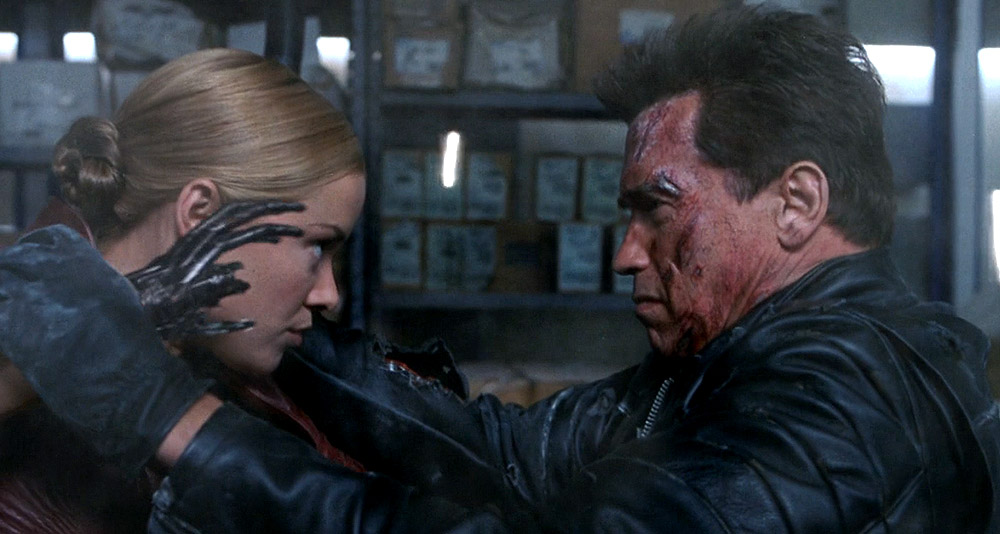
Source: Terminator 3 – Rise of the Machines, Columbia Pictures
Naturally, humanity needed to send another protector back through time, and they somehow managed to get their hands on another 8-series infiltrator. This new Terminator was designated the T-850, sporting enhancements and upgrades that built upon the framework of the last two T-800s sent back through time.
The film did a few things right, particularly the unexpected ending sequence where a postponed Judgment Day actually occurs, and John is powerless to stop it. The idea was to set up an alternate series of events that would lead to SkyNET’s rise, albeit through a different method. Unfortunately, Jonathan Mostow’s directorial skills couldn’t quite make it work.
WHAT IT DID WRONG
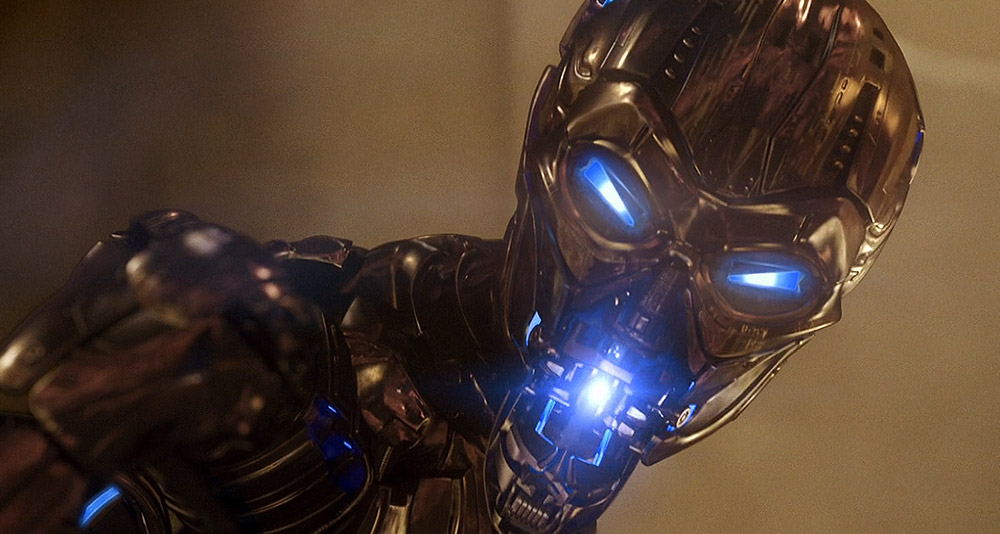
Source: Terminator 3 – Rise of the Machines, Columbia Pictures
Terminator 3 was a victim of its own fanboyism, and that was evident from the very first frame. Rather than build logically and authentically on an already-established universe in the same way that James Cameron did with Ridley Scott’s Alien, Mostow decided to bring his own vision to the franchise instead.
Whenever directors try to put their own mark on an established formula, disaster inevitably ensues. Mostow prioritized cheap gags and silly humor over the strong and tense narrative of the past two Terminator films, and that was a colossal mistake. The first evidence of this occurs when a policeman pulls over the female-looking T-X, who expands her breasts in an effort to distract him.
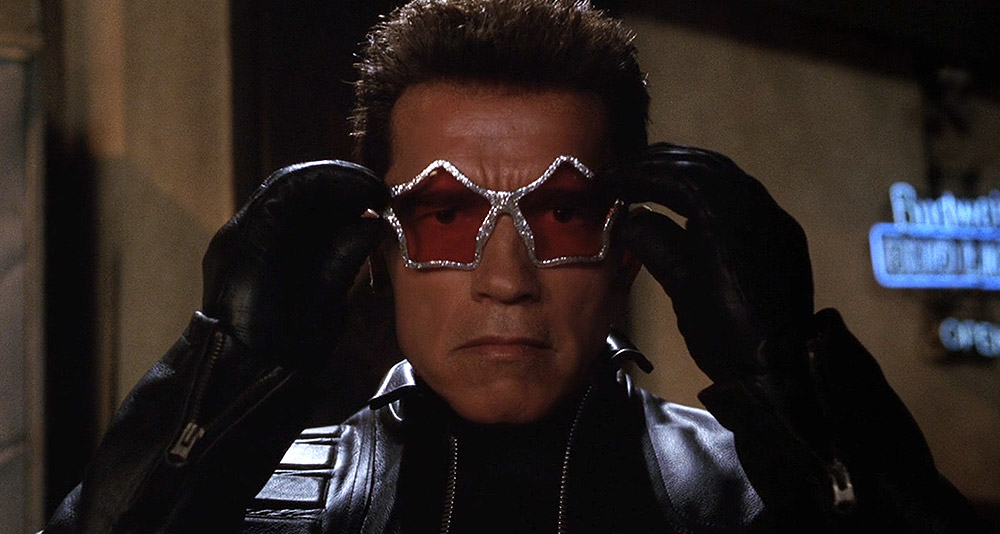
Source: Terminator 3 – Rise of the Machines, Columbia Pictures
Other infamous scenes include Schwarzenegger’s T-850 donning a pair of glasses that would make Elton John cheer, as well as the goofy “talk to the hand” sequence at the gas station. Also, the fights between the T-850 and the T-X were badly directed, with unconvincing CGI and stupid shots of the latter grabbing the former by the crotch and putting him through walls.
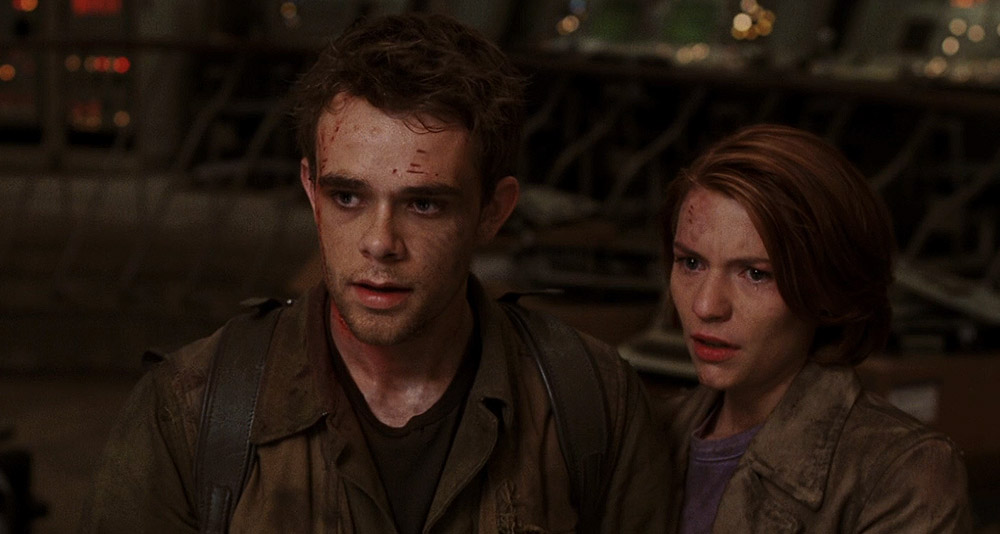
Source: Terminator 3 – Rise of the Machines, Columbia Pictures
From a narrative standpoint, the script had no resonance or power. The magical chemistry established in T2 between the Terminator and John Connor is nowhere to be found here. Part of this was due to the exclusion of original actor Edward Furlong in favor of Nick Stahl. These kinds of actor swap-outs rarely work unless the script is a knockout.
The inclusion of Claire Danes felt like a woeful miscast, as well. Danes is an excellent actress, but she looks like a fish out of water in a Terminator film, and any attempt to sell chemistry between her character and Stahl’s was doomed to failure.
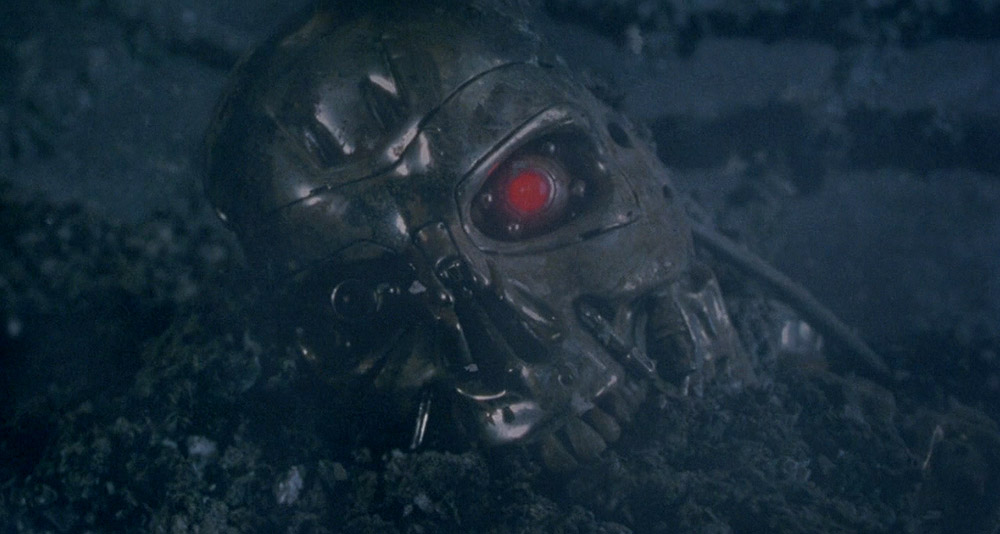
Source: Terminator 3 – Rise of the Machines, Columbia Pictures
And finally, T3 looks way too clean-cut and polished, which is a stark contrast to Cameron’s believable universe established in the first two films. Both were bound with a sense of realism and authenticity that were necessary to sell the outrageous idea of time-traveling cyborgs and temporal paradoxes.
Terminator 3 isn’t a terrible film, but it’s far from a great one. At best, it’s an interesting “what-if” scenario that never really takes off, no matter how bombastic its overly CGI-laden action sequences try to sell it. Its greatest crime is that it doesn’t feel like a Terminator film at all; merely a poor knockoff of the original.
3) TERMINATOR SALVATION (2009)
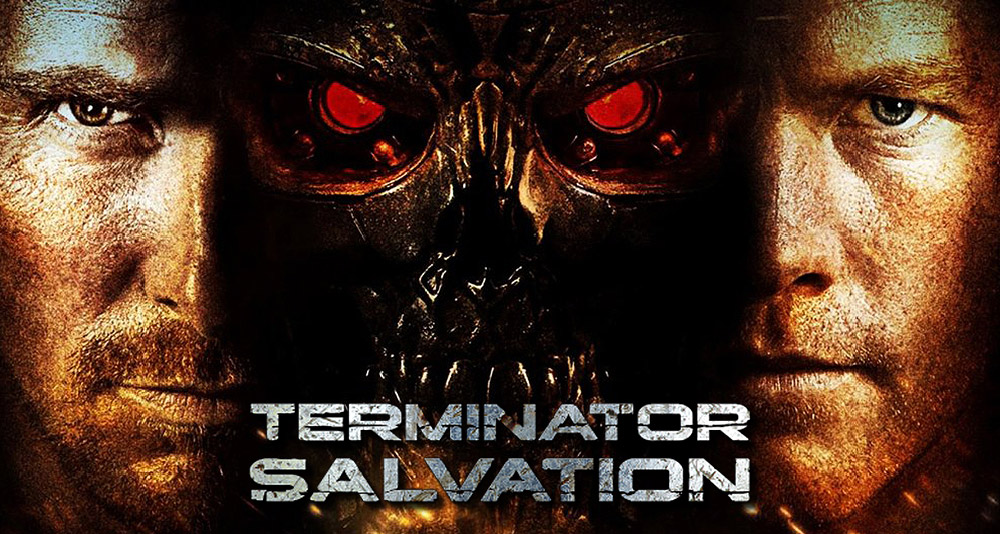
Source: Terminator Salvation, Columbia Pictures
6 years after Terminator 3 made a modest splash, music industry vet McG decided to jump into the director’s chair on a new film, but it was a huge departure from what came before. Terminator Salvation swapped the modern day time-traveling formula in favor of a conflict that took place in a post-Judgment Day future.
The idea was a novel one, and something many Terminator fans had been clamoring to see ever since they glimpsed the two future war sequences from T1 and T2. The story would take into account the timeline of those films, presenting John Connor in his prime as the leader of the future resistance who bears the burden of knowledge.
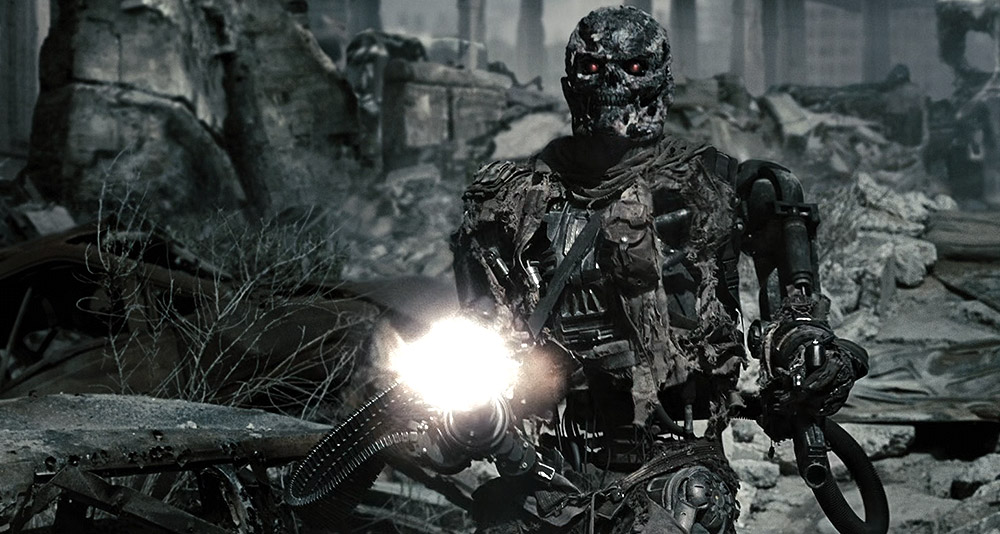
Source: Terminator Salvation, Columbia Pictures
Connor is quickly heralded by many as a prophet for accurately predicting a series of events that would lead to the creation of SkyNET’s T-800 infiltrator units. This revelation attempted to set the table for a narrative where John and SkyNET would go head-to-head in a battle of wills, both armed with knowledge of past and future events.
Terminator Salvation did a lot of things right, and it’s definitely one of the least problematic sequels in the franchise. It’s gritty, dark and full of excellent imagery, and it helped to expand the Terminator mythos in a big way. The details mattered here, right down to the rubber-skinned T-600 infiltrators which Kyle Reese briefly mentioned in the original film.
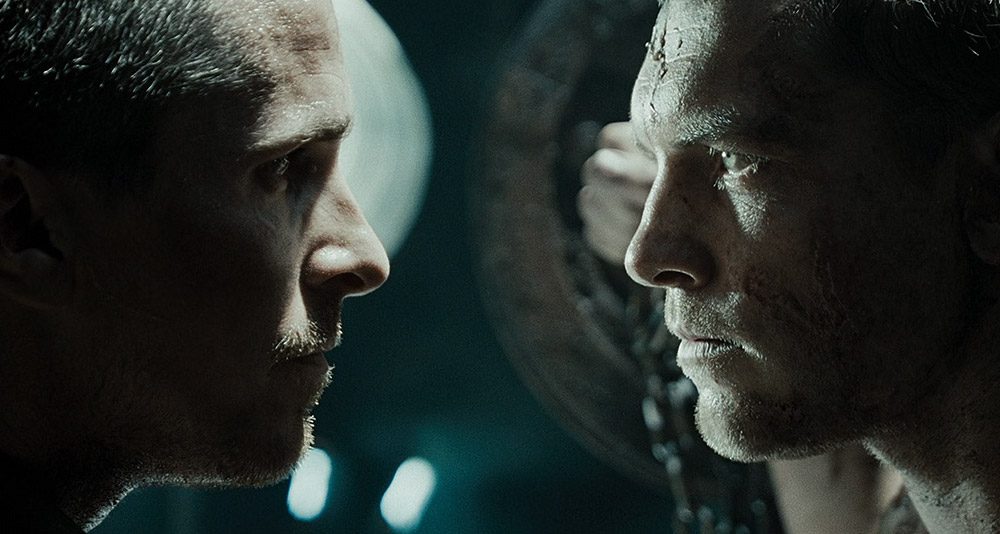
Source: Terminator Salvation, Columbia Pictures
Salvation attempted to tell a cat and mouse story against the backdrop of a nuclear-devastated world trying its hardest to fight back against an intractable and superior foe. The inclusion of strong actors like Christian Bale and Bryce Dallas Howard were definite plusses, but McG ended up fumbling the ball before the final scene came and went.
WHAT IT DID WRONG
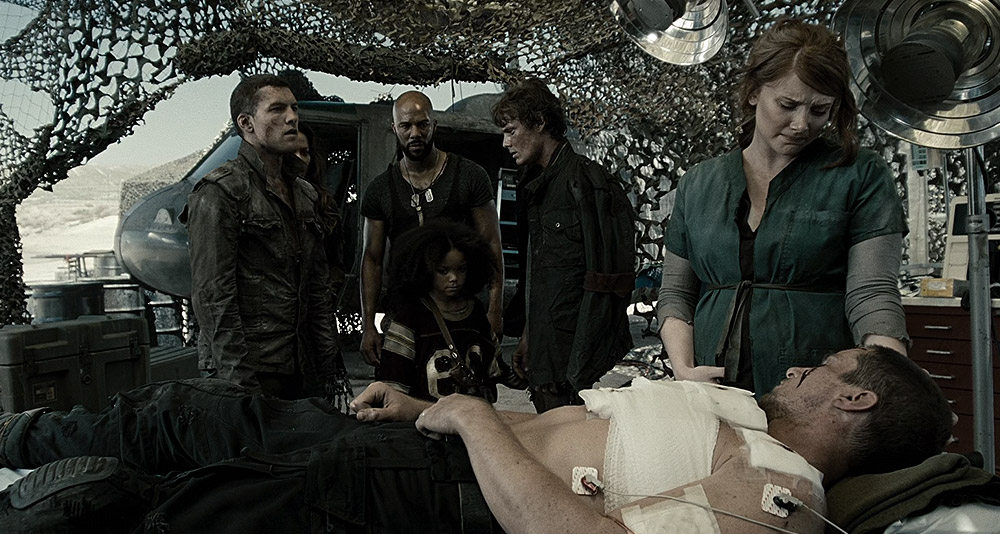
Source: Terminator Salvation, Columbia Pictures
McG made a fatal mistake by not sticking close to the aesthetic of the future war sequences glimpsed in the first two films. There were plenty of directions to take the story, but he attempted to do too much, and could have relied on a much simpler and more straightforward premise.
As such, Salvation became a victim of its own ambition. The most glaring example was the inclusion of character Marcus Wright, played by Avatar’s Sam Worthington. Wright was a death row inmate who essentially signed his body away to science, and would later be used as a guinea pig for SkyNET’s infiltrator program.
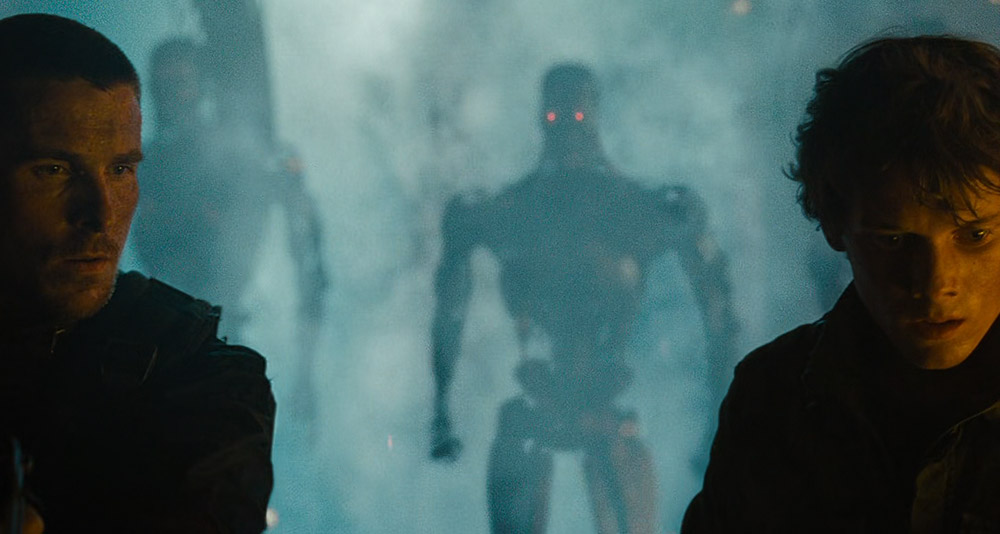
Source: Terminator Salvation, Columbia Pictures
There’s no logical reason to include his character at all, as it draws focus away from John Connor. Plus, the idea of a human being converted into a Terminator was too far-fetched even for this franchise, and the convoluted way SkyNET exploited him was downright silly.
Speaking of SkyNET, Salvation was the first film to try and give this entity some sort of a personality. The entire premise of SkyNET was an artificial intelligence that became self-aware, and relied on split-second calculations to determine that humanity was a threat to its existence. It’s highly doubtful this life form could even communicate with humans on their level.
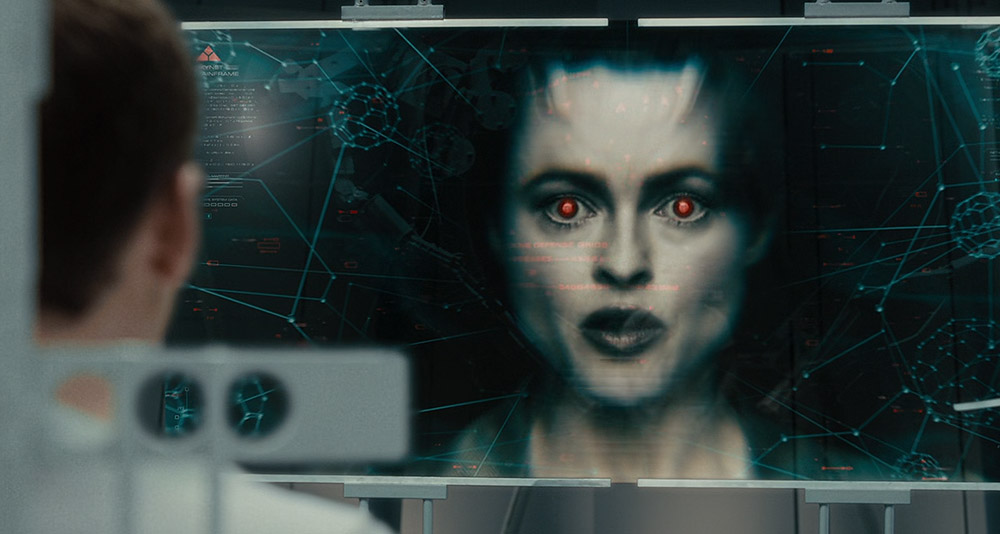
Source: Terminator Salvation, Columbia Pictures
Yet, SkyNET takes the visage of none other than Helena Bonham Carter to strike up a casual, albeit menacing conversation about the lengths it went to in order to lure Connor into a fatal trap. No intelligence of this kind would even make the attempt, or be capable of rationalizing and communicating at that level.
The visuals in Salvation are excellent, though the CGI often leaves much to be desired. The most glaring example took place when a T-800 infiltrator emerges from storage with Arnold Schwarzenegger’s face texture mapped onto the body of another actor. If the idea was to link back to previous films and make audiences cheer, it definitely fell short of its goal.

Source: Terminator Salvation, Columbia Pictures
Still, it’s not all bad, at least until the end when Marcus Wright gives his still-human heart to John Connor in an attempt to save him from dying from a mortal wound. It’s too cheesy to take seriously, and proves once again that Wright’s character as a whole didn’t need to be included in the first place.
In essence, Salvation had all the elements necessary to create a wholly unique and enjoyable Terminator film, but it strayed too far from those same elements to be a success. It grossed a pittance against its lofty $200 million dollar budget.
4) TERMINATOR GENISYS (2015)
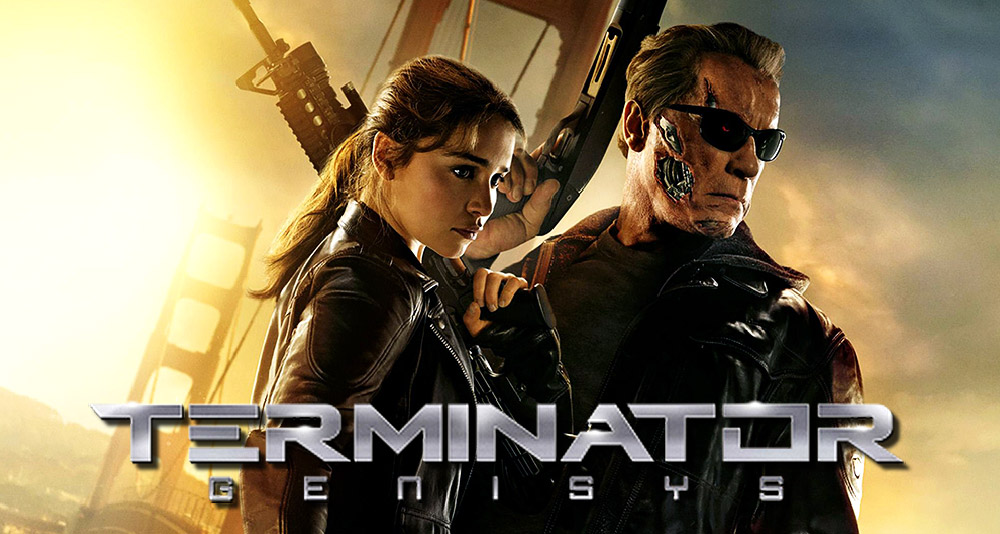
Source: Terminator Genisys, Skydance Productions
Following his absence from Terminator Salvation, Arnold Schwarzenegger made a return to the franchise in 2015 with Terminator Genisys, an attempt to link itself to the heritage of past films, while still treading new ground. Thor: The Dark World director Alan Taylor took the director’s chair for this one, and the result was one part of a two-pronged effort that sealed the franchise’s doom.
The story begins by following the chronological timeline of events from the first two films, but it creates a temporal paradox to throw this sequence out of order. The first T-800 from the original Terminator film goes head-to-head with an aged counterpart the moment it arrives in Los Angeles, while Kyle Reese is plagued by memories of his existence in an alternate timeline.
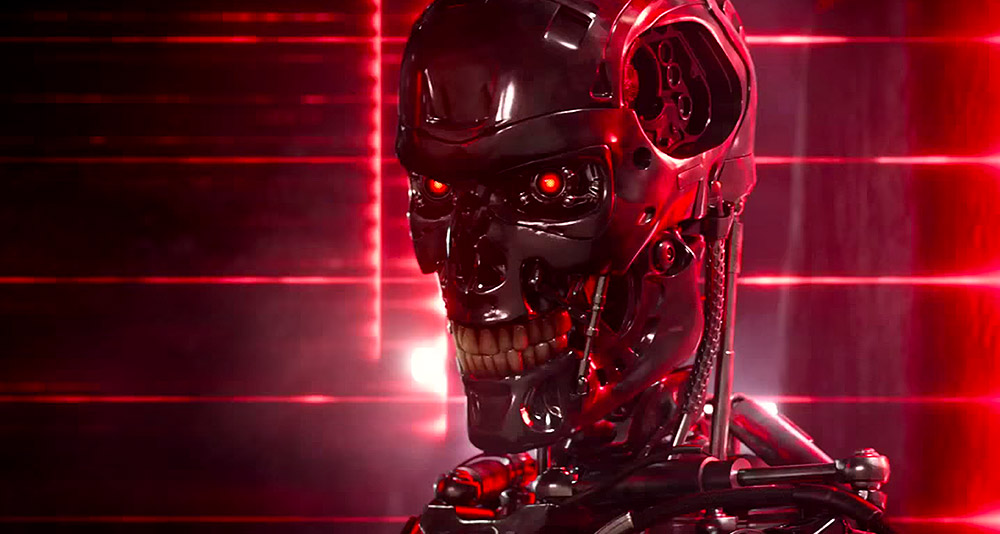
Source: Terminator Genisys, Skydance Productions
It’s later revealed that SkyNET has manifested itself as Genisys, a worldwide operating system set to go live, and give it the ability to trigger Judgment Day. John Connor becomes the antagonist of the film after being infected with machine phase matter, turning him into a highly durable and dangerous T-3000 under SkyNET’s direct control.
The T-800 and John go head-to-head in the final battle, with the former gaining the upper hand after being exposed to an experimental liquid metal compound, similar to the T-1000. Once again, they manage to thwart SkyNET’s plans, but the ending leaves things wide open for future sequels that would never come.
WHAT IT DID WRONG
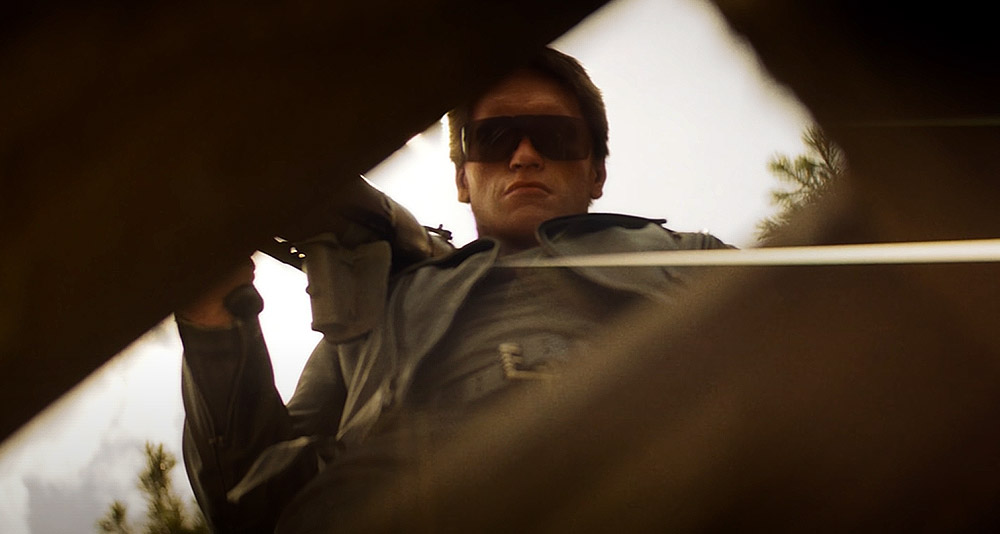
Source: Terminator Genisys, Skydance Productions
It’s hard to believe that Terminator Genisys was greenlit, but the proof is in the pudding. Somehow, this travesty managed to make it to production, and the result was a bizarre, disjointed and inauthentic excuse for a Terminator film. In fact, Genisys did almost everything wrong, and practically nothing right.
Alan Taylor made the critical mistake of trying to replicate key scenes from past films – particularly the first Terminator – in an effort to bridge the decades and give his film a sense of weight and authenticity. Unfortunately, this tactic backfired, and the entire thing felt awkward and weird.
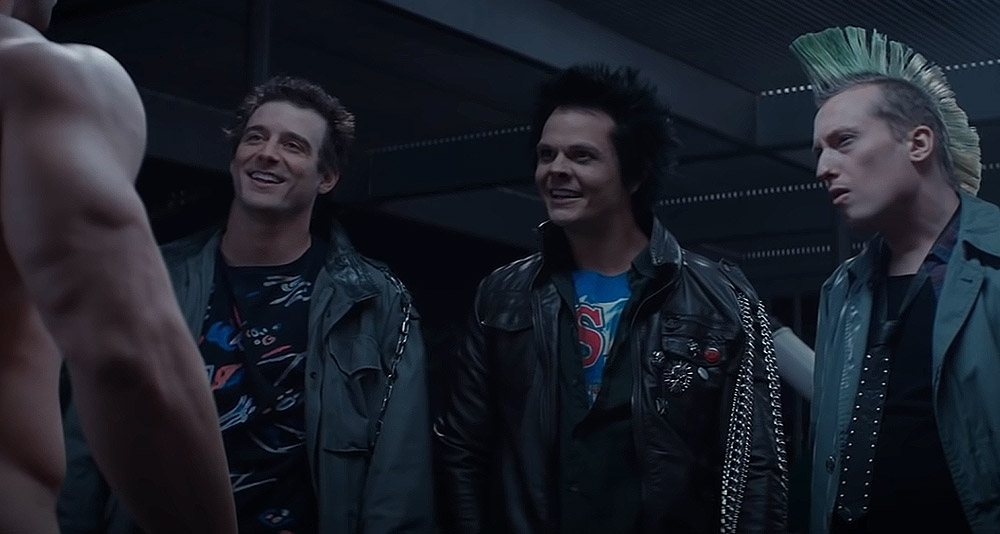
Source: Terminator Genisys, Skydance Productions
This was glimpsed in the beginning act when Taylor attempted to recreate the scene where the first T-800 confronts a trio of punks. Their character performances are downright awful and cringeworthy, as is the fight that ensues second later between the two Terminator models.
That leads directly into the poor casting decisions, particularly leads Emelia Clarke and Jai Courtney. The former is not the least bit convincing as Sarah Connor, but her familiarity with Alan Taylor on the set of Game of Thrones probably had a lot to do with the casting decision. Clarke tries to emulate Linda Hamilton’s T2 mannerisms, but it’s a blind fail across the board.

Source: Terminator Genisys, Skydance Productions
Similarly, Jai Courtney as Kyle Reese was a terrible casting decision. Courtney is an actor best suited for very specific roles, and he lacks the gravitas and training to play a PTSD-suffering future soldier in the same way that Michael Biehn managed with such effortlessness. His dialogue after escaping the T-1000 is worthy of a Raspberry or two, to say the least.

Source: Terminator Genisys, Skydance Productions
The decision to turn John Connor into a puppet for SkyNET is, once again, completely out of the realm of believability, all for the sake of subverting expectations. Nobody wanted to see an evil John Connor, much less a “cyberized” one with an amped up model number.
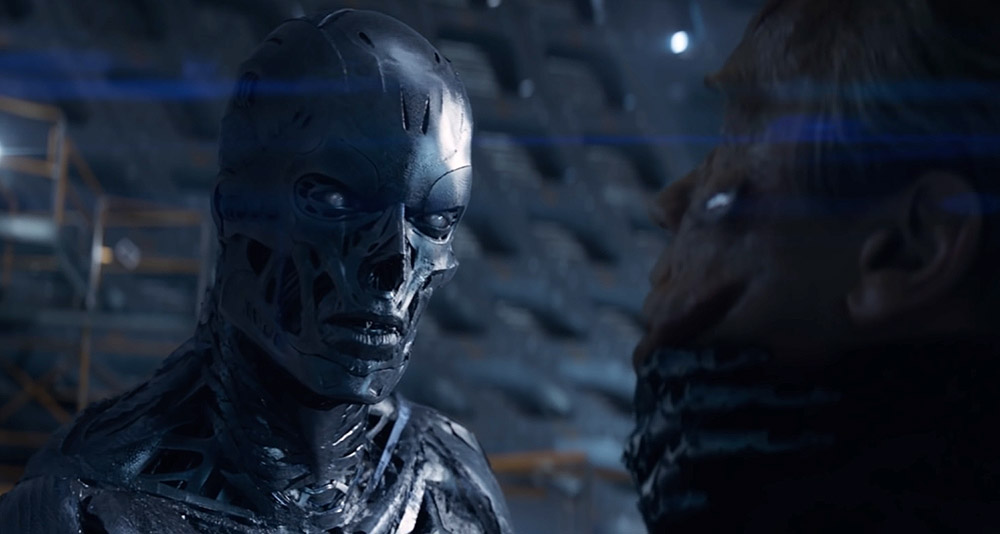
Source: Terminator Genisys, Skydance Productions
Even Schwarzenegger seemed like he was in it just for the paycheck, which is indicative of the fact that he’s essentially a bit player in his own film. By the time his character is “upgraded” by experimental mimetic polyalloy at the end of the film, it’s obvious that creatively dry fan fiction has run amok, unchecked and unchallenged.
That, combined with one convoluted time paradox after another, and Genisys was doomed to net a paltry audience reception from fans who simply weren’t interested.
5) TERMINATOR: DARK FATE (2019)
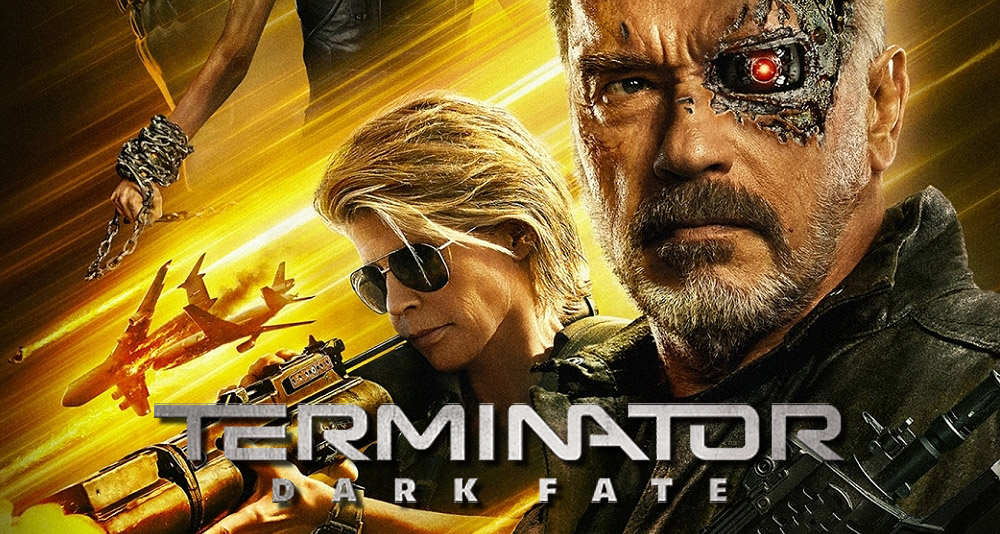
Source: Terminator: Dark Fate, Paramount Pictures
After the train wreck driven through a nitroglycerine plant that was Terminator Genisys, it seemed incomprehensible that things could get any worse. Then, Dark Fate pulled the ultimate “hold my beer” moment, and led the franchise by its nose through a proverbial meat grinder, signaling its total destruction.
Dark Fate attempted to wipe the slate of previous Terminator sequels clean, linking back directly to T2, and picking up where it left off. That meant sequels Terminator 3, Salvation and Genisys were effectively de-canonized in favor of this “official” new timeline. In so doing, it tried to establish an alternate future timeline where SkyNET was replaced with another AI known as Legion, which was the start of its problems.

Source: Terminator: Dark Fate, Paramount Pictures
This effectively created a hybrid of two universes with Terminators from two distinct factions, and only Sarah Connor as the link between them. To destroy Legion, Sarah is forced to team up with an enhanced future soldier named Grace, a young woman with an important destiny, and the Terminator who killed her son John.
WHAT IT DID WRONG
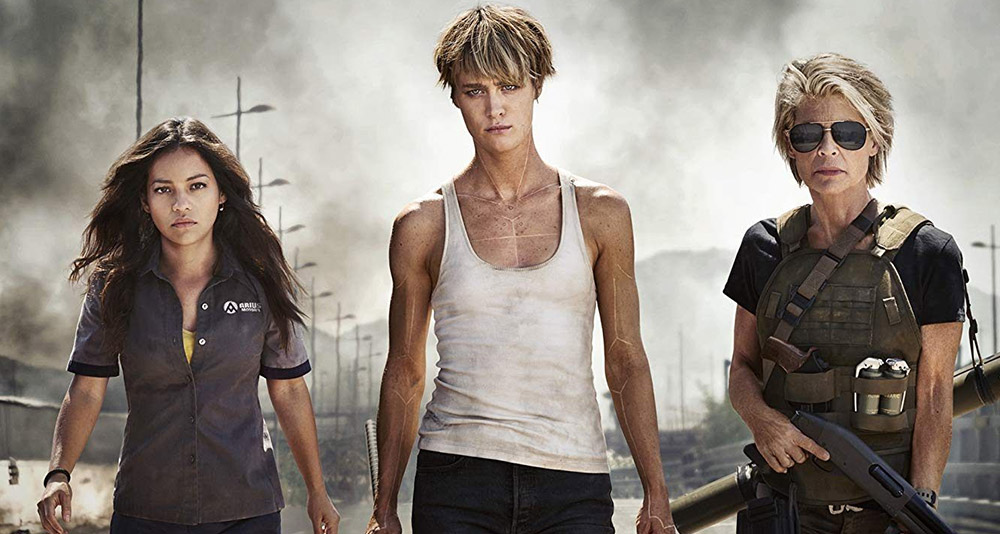
Source: Terminator: Dark Fate, Paramount Pictures
Dark Fate came out just as radical Wokeism had infected the cultural body and turned Hollywood into a soulless identity-politics driven soapbox. Deadpool director Tim Miller got out way over his skis by attempting to liquidate the past films in favor of a new narrative built upon its ashes. In so doing, he obliterated the Terminator franchise altogether.
The film opens with Edward Furlong’s John Connor murdered in cold blood by a T-800, right after the events of T2. This single act nullified the struggle that both Connors went through during the first two films, and their determination to set things right by preventing a nuclear holocaust.
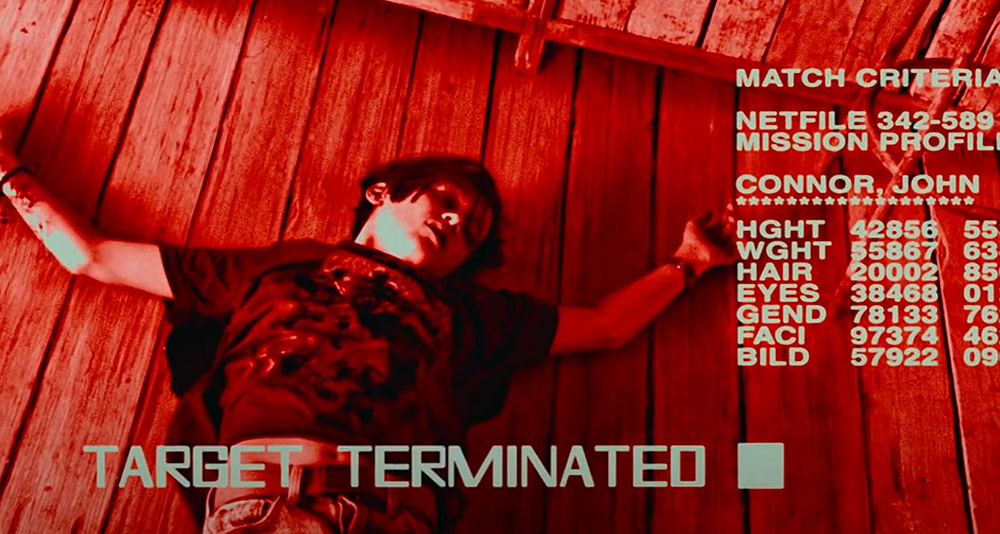
Source: Terminator: Dark Fate, Paramount Pictures
Not only was it a slap in the face to longtime Terminator fans, but it also added insult to the injury by introducing a new future leader of the human resistance who wasn’t the least bit believable.
Enter Dani Ramos, a young girl destined to replace John Connor as humanity’s savior against the new genocidal AI. Ramos was played by 5’1″, 120 lb. actress Natalia Reyes, a girl nobody would follow into battle, much less take orders from. The entire concept was preposterous, and nowhere was this more apparent than during the infamous weapons training scene.

Source: Terminator: Dark Fate, Paaramount Pictures
Reyes is depicted holding a weapon in such awkward fashion as to spill over into abject hilarity. She’s no leader, and she certainly wouldn’t galvanize humanity to follow her into battle in the same way that Linda Hamilton’s character Sarah could. It simply didn’t work, and ended up turning Dark Fate into a total joke.
The ultra-feminist themes of Dark Fate were a foreign concept to Terminator’s overly male fan demographic, especially those who grew up watching hyper-masculine Arnold Schwarzenegger tear through the scenery as the near-unstoppable machine.

Source: Terminator: Dark Fate, Paramount Pictures
Even T2’s depiction of a buffed-up and soldier-esque Sarah Connor felt logical and authentic, and audiences believed in the character as a result. Yet, that Sarah was still fragile despite her military training and combat expertise, and she wore her maternal instinct proudly on her sleeve. That all goes out the window in Dark Fate, presenting a Sarah Connor that felt foreign to diehard fans.
In fact, Dark Fate epitomizes the radical Left’s loathing of children in such overt fashion as to border on grotesque. Criticism was heaped on the film for bastardizing Sarah Connor’s character by turning her into a vindictive shadow of her former self. That wasn’t by accident, but rather by intention.

Source: Terminator: Dark Fate, Paramount Pictures
And then there’s “Carl,” a T-800 who successfully murders John at the beginning of the film, only to have a crisis of conscience decades later, and turn into a mild-mannered family man. This was such a preposterous and ridiculous assertion that it scarcely bears mentioning, and it once again delegated Schwarzenegger’s cyborg character to the back of the bus as a dusty old has-been.
Again, by Woke intention.

Source: Terminator: Dark Fate, Paramount Pictures
Dark Fate didn’t bring anything new to Terminator. Rather, it copied the formula of the first two films and gender-swapped its most important character, just to make a political statement. Fans responded in kind, and Terminator: Dark Fate managed to gross an embarrassing $261 million dollar take, opposite a $200 million dollar budget… not including marketing costs.
Director Tim Miller bore the brunt of it, particularly in light of his controversial comments attacking critical fans of being misogynists for failing to swallow the overt Woke feminism of the film. In the end, Miller would be forced to eat his own words with nothing to wash it down, which was exactly what he deserved.
IN CONCLUSION
Terminator went from being one of the hottest and most artistically impressive sci-fi franchises of all time, to toxic and radioactive within the space of just three decades. A large part of the blame could be placed on James Cameron’s absence, and his unwillingness to tackle any more Terminator films following T2.
Indeed, Cameron was already setting his sights on mega-blockbusters like Titanic, while exploring the deep oceans of the world. He’d later turn his focus to Avatar, which was a far cry from the cyborg assassin he had envisioned so many years before.
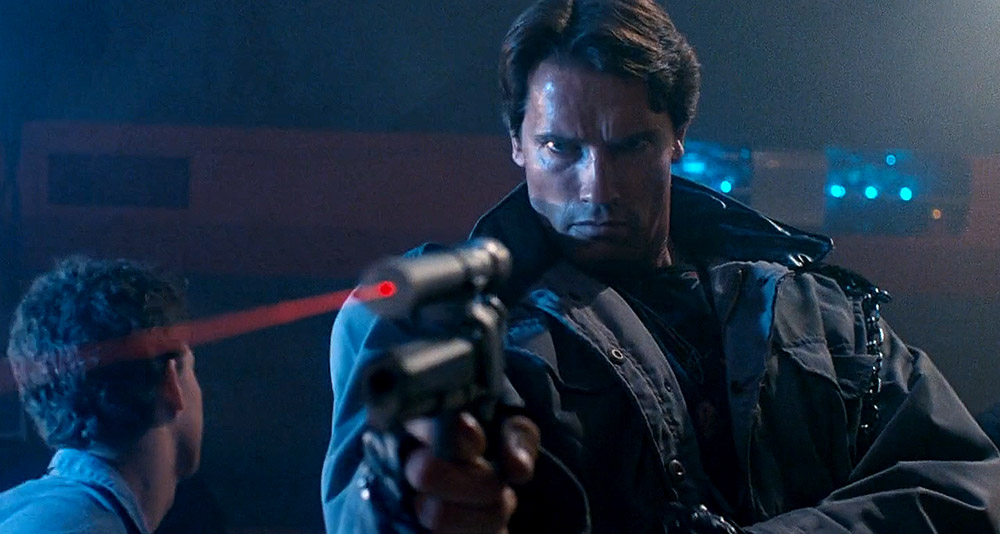
Source: The Terminator, Orion Pictures
It’s doubtful that Hollywood will touch Terminator with a hundred-foot pole at this point, but it’s obtuse to presume that the series has been permanently mothballed. Dark Fate’s refusal to acknowledge any sequel beyond Terminator 2 means that the series as a whole has become too convoluted to continue in its current state.
Expect a full-fledged reboot of the franchise sometime in the next few years that follows a similar premise, while changing the timeline around to account for the decades that have passed. Don’t, however, expect it to be good, because that’s not how Hollywood rolls these days.
NEXT: Predator – What Every Sequel Did Wrong
More About:Movies
